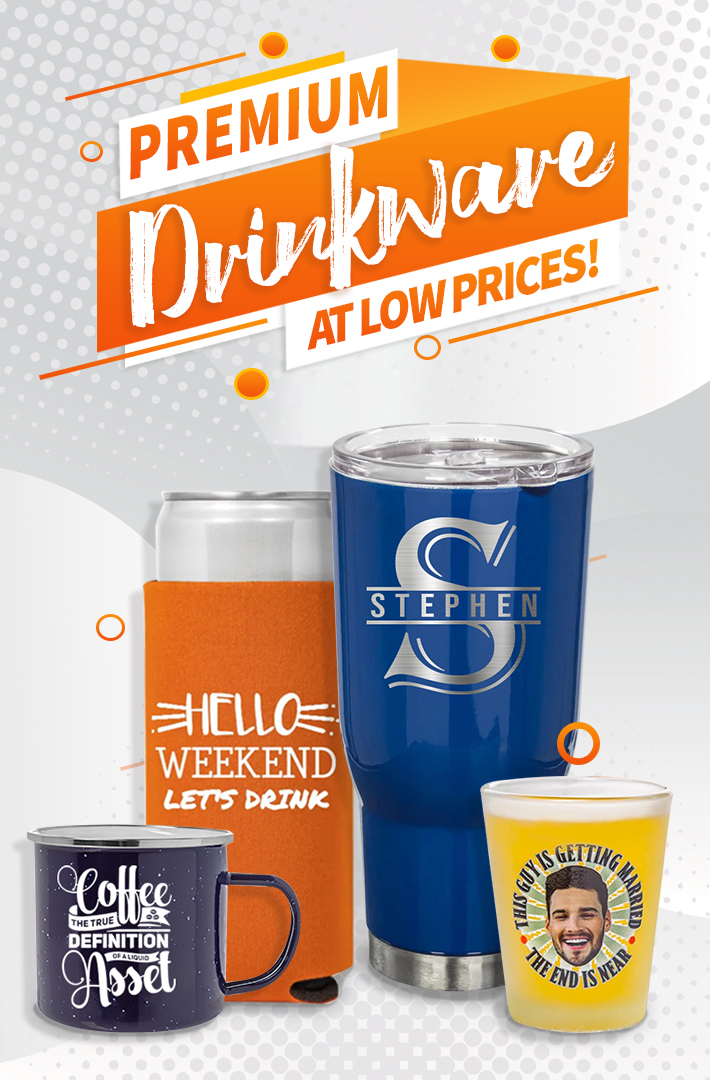
In the modern world dominated by digital communication, standard business cards remain a reliable symbol of professionalism and networking prowess. Despite the rise of social media and email marketing, the tangible exchange of contact information through a well-designed paper stock business card continues to hold significant value in the business landscape.
Business cards, when designed with all the information required, serve as powerful tools for networking and promotion. When designed strategically, they can make a lasting impression on potential clients and partners.
This is a comprehensive guide on maximizing the use of business cards for marketing, networking, and promotion. Whether you’re a seasoned entrepreneur, a budding professional, or someone looking to elevate their brand presence, this blog is designed to equip you with the knowledge and strategies needed to leverage business cards effectively.
In the following sections, we will discuss the different ways business cards can be utilized as powerful tools for making lasting impressions, expanding your professional network, and driving business growth. From design principles that capture attention to strategic distribution tactics that ensure your cards reach the right hands, we’ll explore every aspect of optimizing this traditional marketing asset in today’s digital age.
Moreover, we’ll discuss the importance of incorporating business cards into your overall marketing strategy, highlighting their unique ability to bridge the gap between offline and online interactions. In an interconnected world where virtual connections abound, business cards serve as tangible reminders of personal connections and serve as catalysts for further engagement.
Whether you’re attending industry conferences, networking events, or simply meeting potential customers or collaborators, your business card is often the first point of contact that leaves a lasting impression. Therefore, it’s crucial to ensure that your cards not only convey essential contact information but also reflect your brand identity and values.
Throughout this blog, we’ll provide practical tips, creative ideas, and real-world examples to inspire and empower you to make the most of your business cards. From crafting compelling designs that stand out in a sea of competitors to utilizing innovative printing techniques and materials, we’ll explore various strategies to elevate the impact of your business card marketing efforts.
In essence, this guide is your roadmap to unlocking the full potential of business cards as versatile tools for marketing, networking, and promotion. Whether you’re aiming to make meaningful connections, increase brand visibility, or drive business growth, mastering the art of business card utilization is essential in today’s competitive landscape.
So, let’s discover how you can harness the power of business cards to leave a lasting impression, forge valuable connections, and propel your business forward in an increasingly digital world.
Crafting a Memorable Business Card

A well-designed business card should be visually appealing, informative, and reflective of your brand. Ensure it includes essential information and a clear call to action.
Your business cards should stand out and leave a lasting impression. Invest in quality cardstock, choose eye-catching designs, and include relevant information. Consider using a two sided design for additional details, such as your social media profiles or a brief tagline.
Making the Most of Every Opportunity

Always carry a stack of business cards with you and be ready to share them at networking events, conferences, and meetings. Don’t miss out on potential connections by leaving your business cards behind.
Be strategic about where you distribute your cards. Attend events and conferences relevant to your industry or target market. Consider joining professional associations or networking groups where you can meet potential clients or collaborators. Focus on building relationships with individuals who are likely to benefit from your products or services.
Leveraging Digital Platforms

Incorporate QR codes or NFC technology on your business cards to direct recipients to your website or social media profiles. This can enhance engagement and provide additional value to the recipient.
Incorporate QR codes in your business card design to make it easier for recipients to connect with you online. You can link the code to your website, portfolio, or LinkedIn profile, providing instant access to more information about you and your services.
Following Up Effectively

After exchanging business cards, follow up with a personalized email or message to reinforce the connection. This simple gesture can set the foundation for a fruitful business relationship.
After networking events or meetings where you’ve exchanged cards, follow up promptly. Send a personalized email or LinkedIn message referencing your conversation and expressing your interest in continuing the discussion. Following up demonstrates professionalism and keeps the connection alive.
Tracking and Analyzing Results

Utilize tools like personalized URLs or unique discount codes on your business cards to track the effectiveness of your marketing efforts. Analyzing these metrics can help you refine your strategies for future campaigns.
Keep track of how effective your networking efforts are by monitoring the response to your cards. Pay attention to metrics such as the number of follow-up emails you receive, the increase in website traffic from QR code scans, or the number of new connections on LinkedIn. Use this data to refine your approach and focus on strategies that yield the best results.
Design Tips for Creative, Professional Business Cards
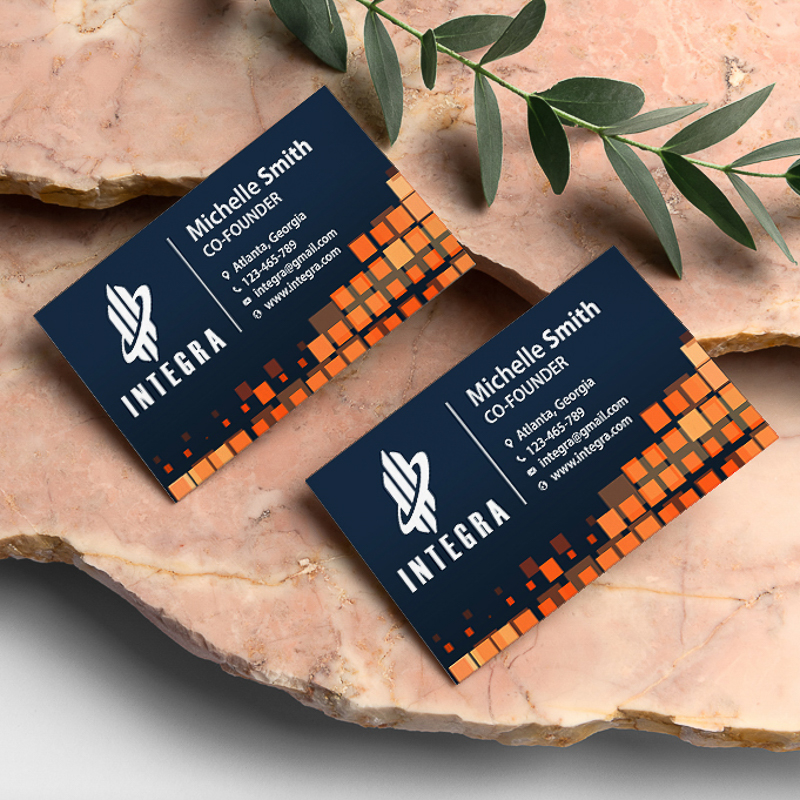
Designing a business card that effectively promotes marketing and networking requires a balance of professionalism, creativity, and functionality. Here are some ideas to consider:
Take Advantage of Different Shapes and Sizes

Business cards come in various shapes and sizes to suit different preferences and design aesthetics. Here are some common shapes and sizes for business cards:
Standard Business Card Sizes:
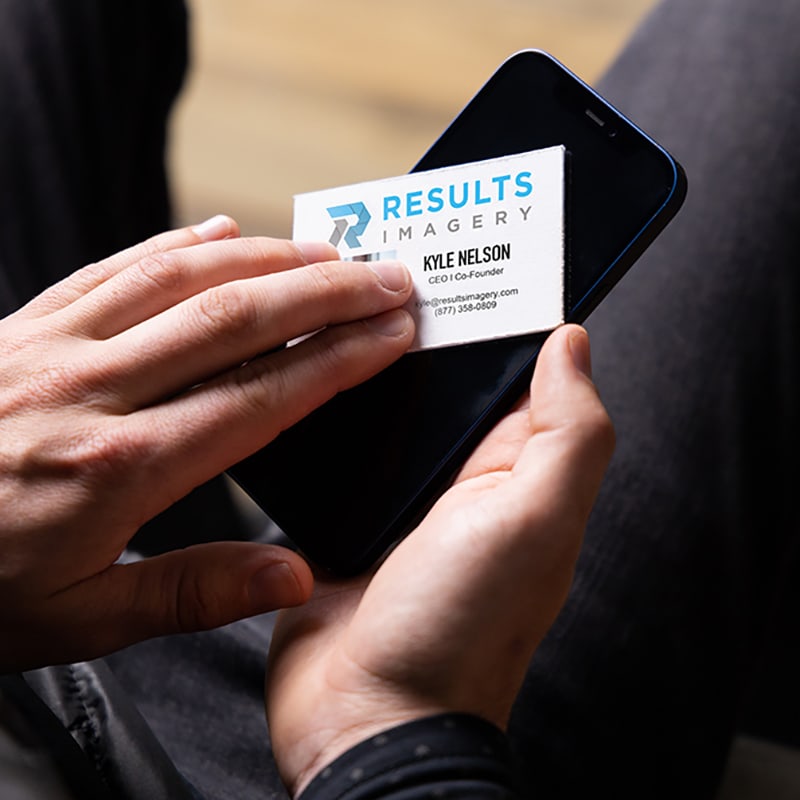
The standard business card size is 3.5 inches x 2 inches (88.9mm x 50.8mm) This is the most common size for business card designs and fits easily into wallet and cardholders.
Mini or Slim Size:
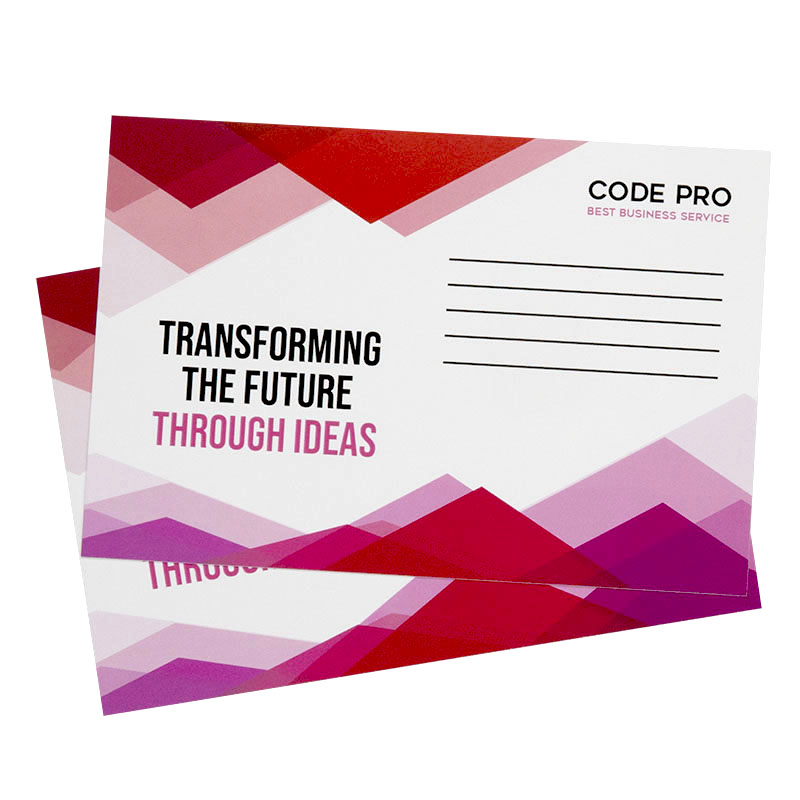
Dimensions: 3.5 inches x 1.5 inches (88.9mm x 38.1mm) A slimmer version of the standard size, offering a sleek and unique look.
Square:
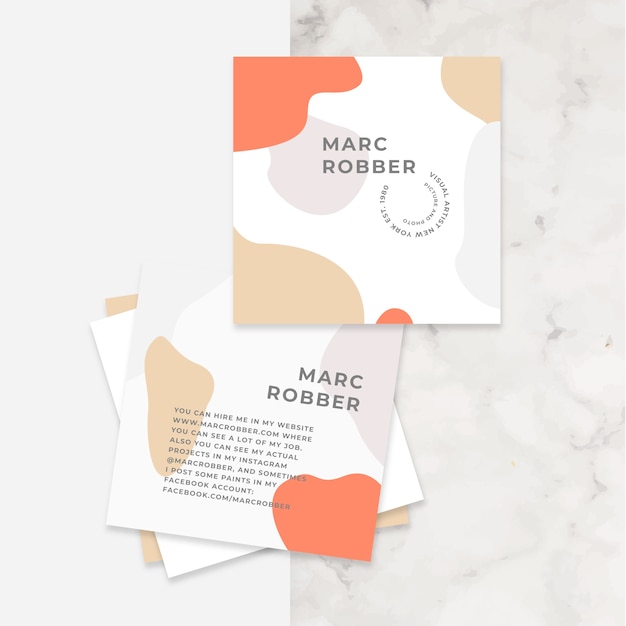
Dimensions: 2.5 inches x 2.5 inches (63.5mm x 63.5mm) or 3 inches x 3 inches (76.2mm x 76.2mm)
Square business cards stand out and provide a modern and creative touch.
Rounded Corners:

Can be applied to any standard size or shape. Rounded corners soften the edges of the card, making it visually appealing and easier to handle.
Die-Cut:
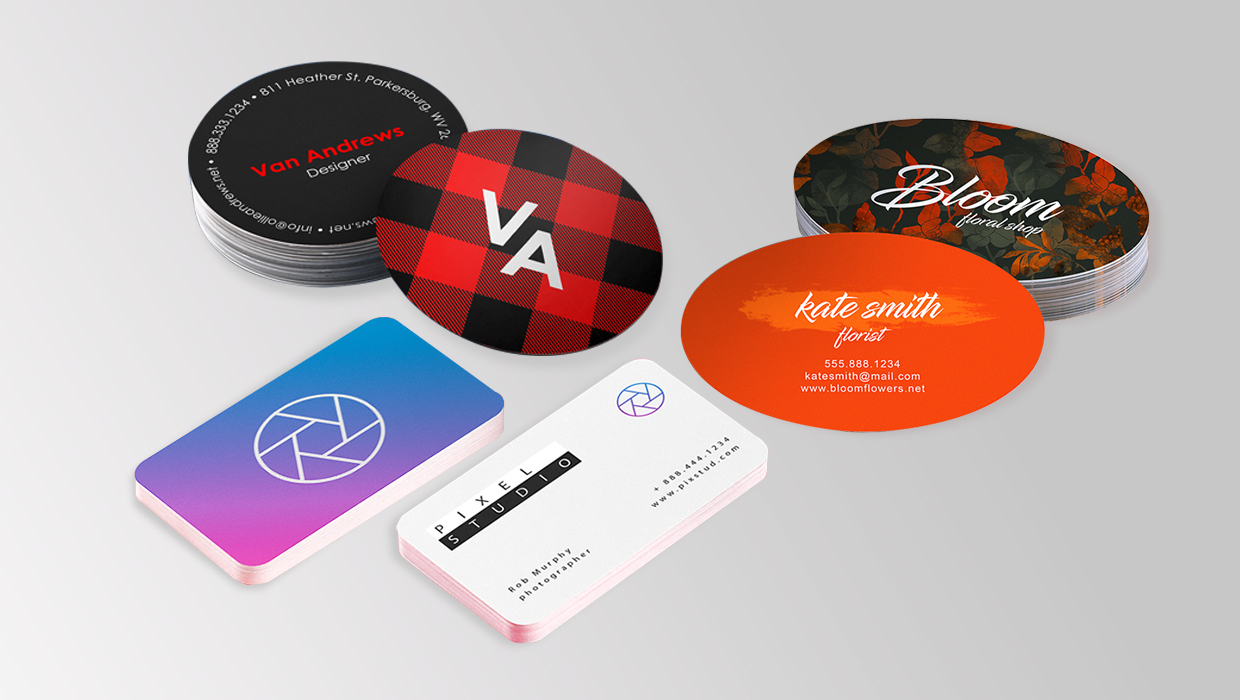
Custom shapes and sizes can be created using die-cutting techniques. Examples include round, oval, or custom shapes tailored to the business’s branding or industry.
Folded:
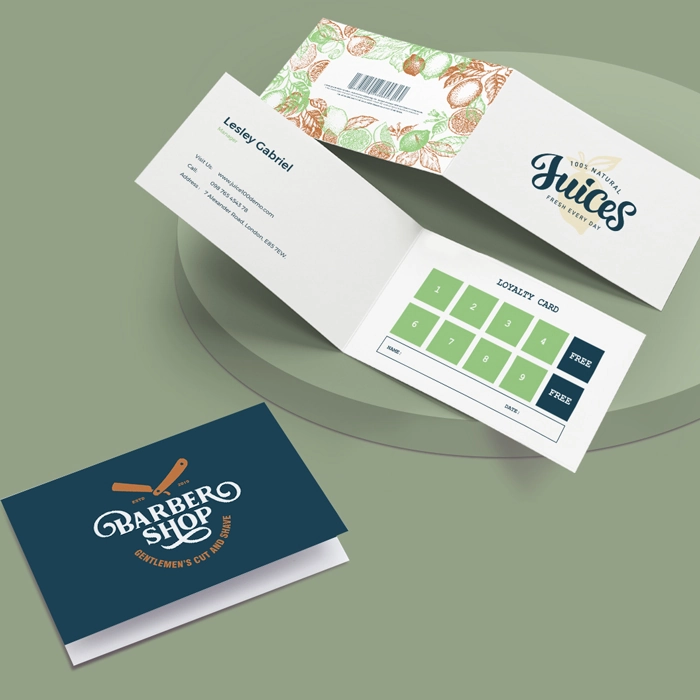
The dimensions for folded business cards varies, typically folded to half the size of a standard card. These business card sizes provides more space for information, such as additional services, maps, or schedules.
Custom Shapes:

Businesses can experiment with unique shapes that represent their brand or industry. For example, a bakery might opt for a business card shaped like a cupcake or a chef’s hat.
Clean and Professional Design:
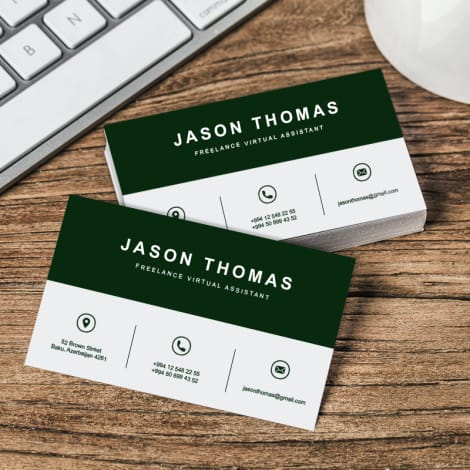
In a cluttered world, simplicity stands out. Opt for a minimalist approach with clean lines, ample white space, and a striking logo. Less is often more when it comes to business card design, as it allows crucial information to shine without overwhelming the recipient.
Ensure the overall design is clean and professional, reflecting your brand’s image. Use a high-quality card stock and consider matte or glossy finishes for a polished look and soft touch.
Eye-Catching Logo:
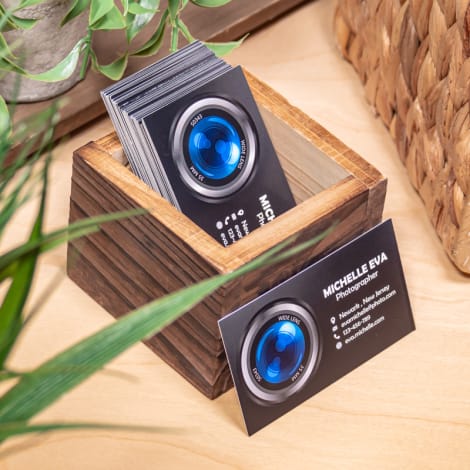
Feature your company logo prominently on the card to increase brand recognition. Make sure it’s clear and easily identifiable.
Contact Information:
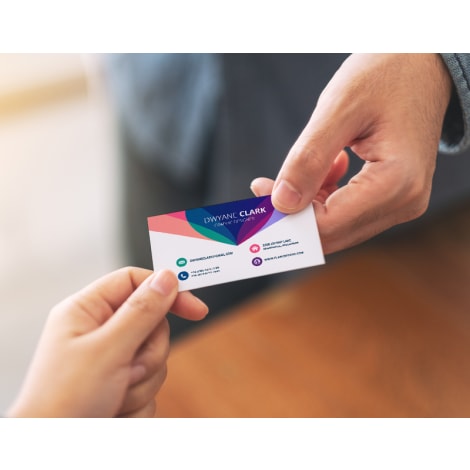
Include essential contact information such as your name, job title, phone number, email address, and website URL. Use a legible font size and style for easy readability.
Social Media Handles:

If relevant, include your social media handles (LinkedIn, Twitter, Instagram, etc.) to encourage further networking and engagement.
QR Code:
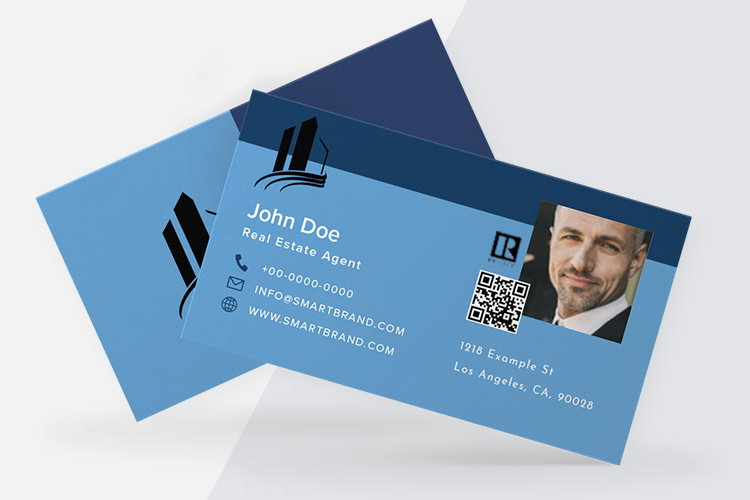
Incorporate a QR code that links to your website, portfolio, or LinkedIn profile. This allows recipients to quickly access more information about you or your business.
Unique Shape or Texture:
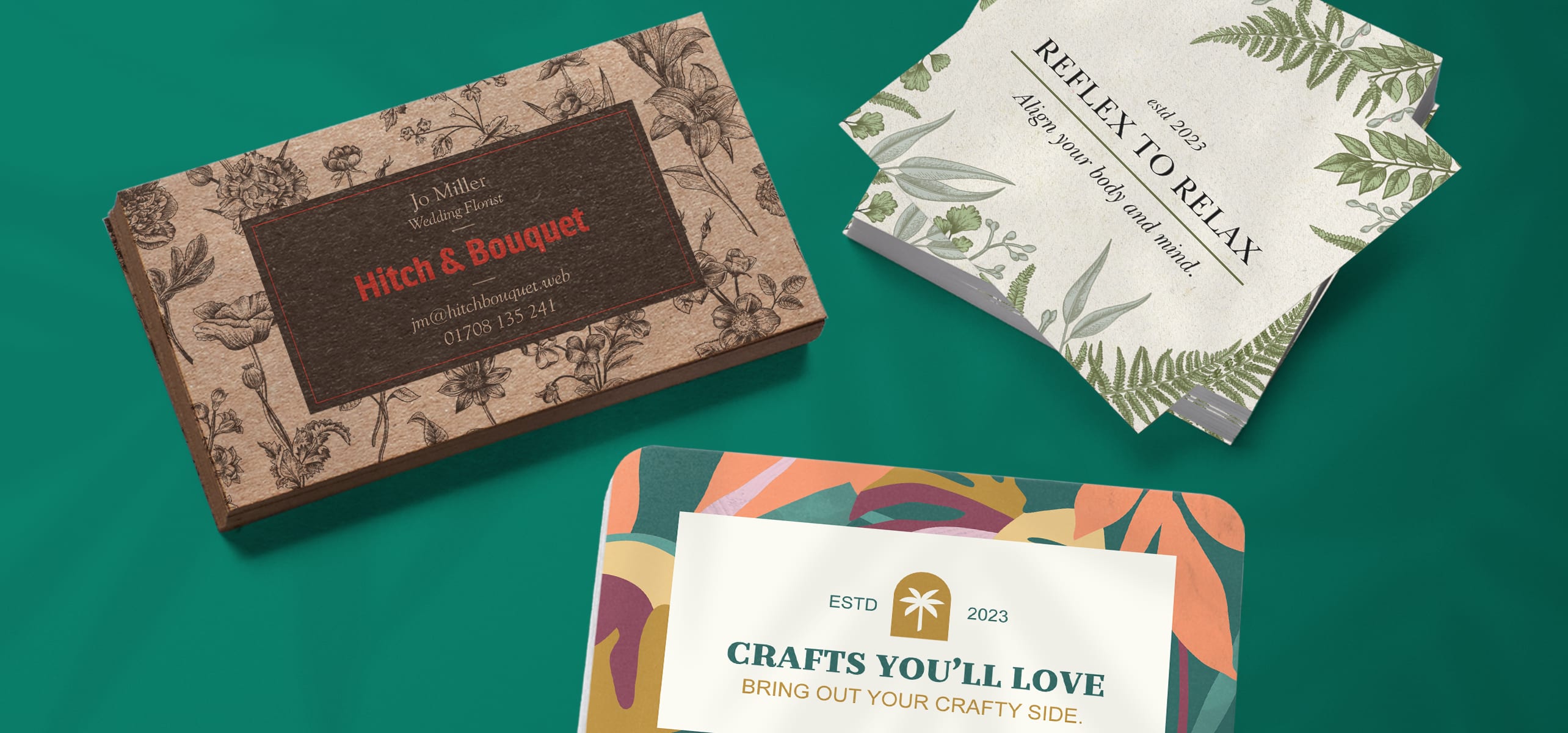
Stand out from traditional rectangular cards by opting for a unique shape or textured finish. Just ensure it still fits in standard cardholders.
Tagline or Value Proposition:
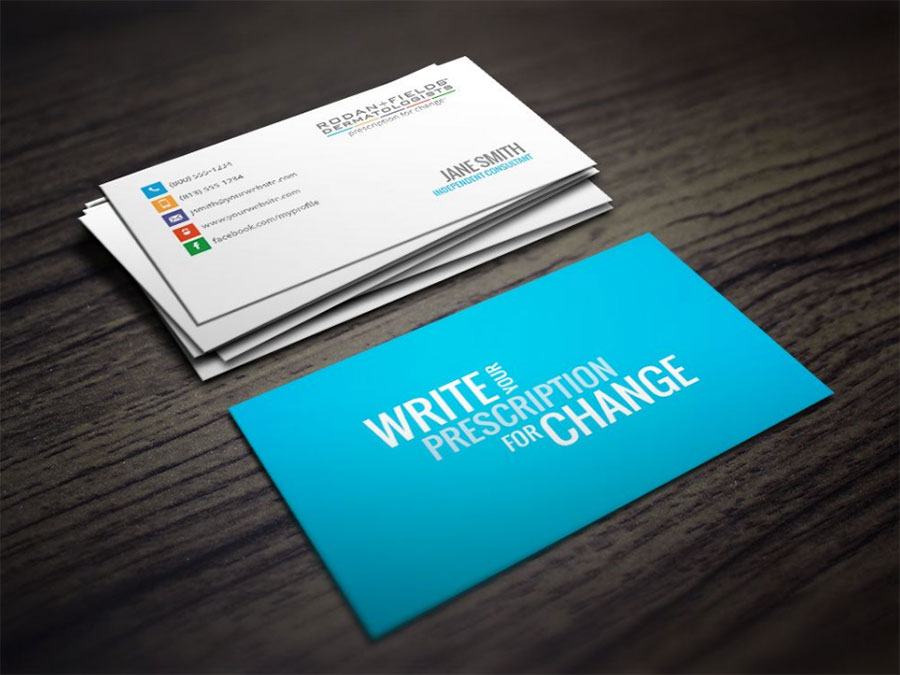
Include a brief tagline or value proposition that succinctly communicates what sets you apart or what your business specializes in.
Visuals or Graphics:
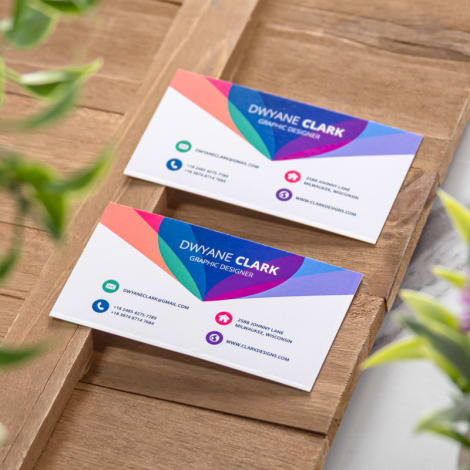
Add relevant visuals or graphics that align with your industry or brand identity. Avoid cluttering the card; opt for a minimalist approach that enhances readability.
Call to Action:
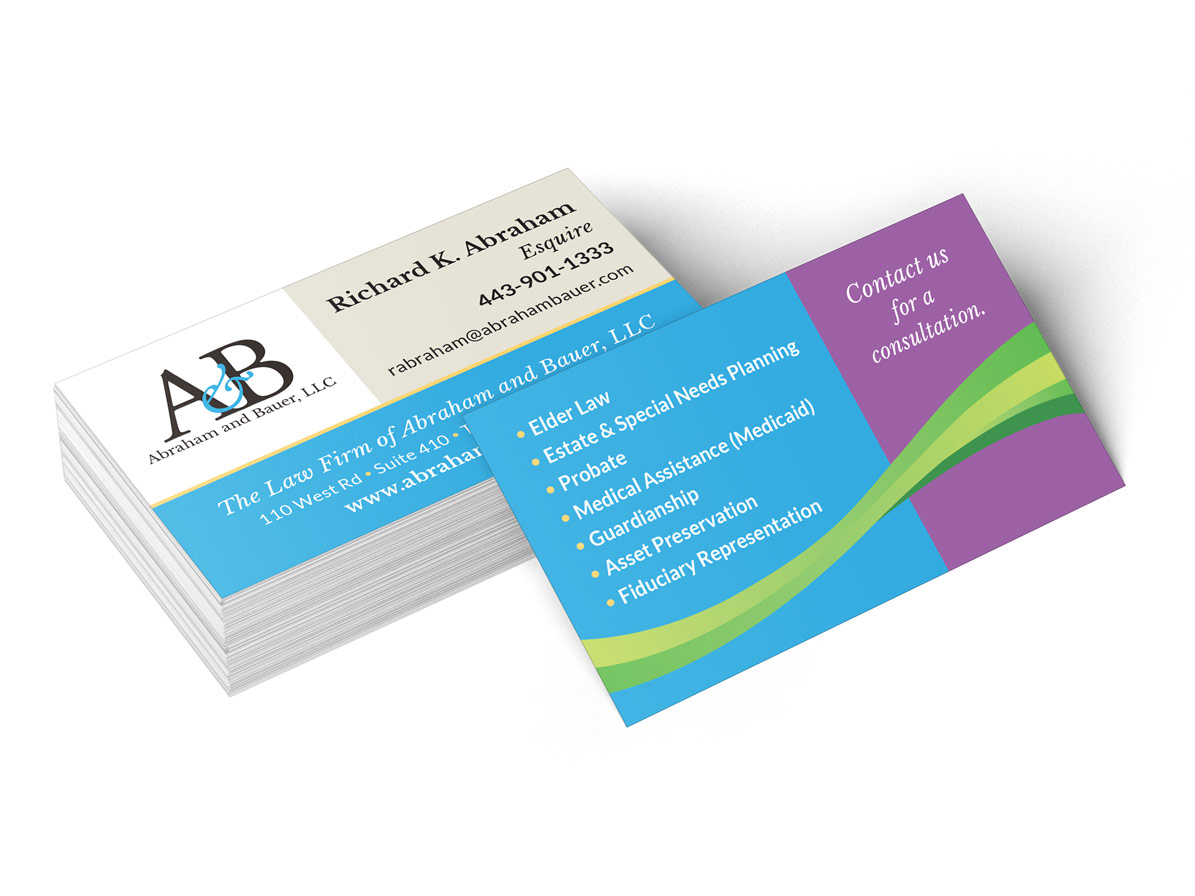
Include a subtle call to action, such as “Connect with me to discuss your marketing needs” or “Visit our website for exclusive offers.” This prompts recipients to take action after receiving your card.
Dual-Purpose Design:

Consider designing your card to serve a dual purpose, such as doubling as a discount card or appointment reminder. This adds value for the recipient and increases the likelihood of retention.
Interactive Elements:
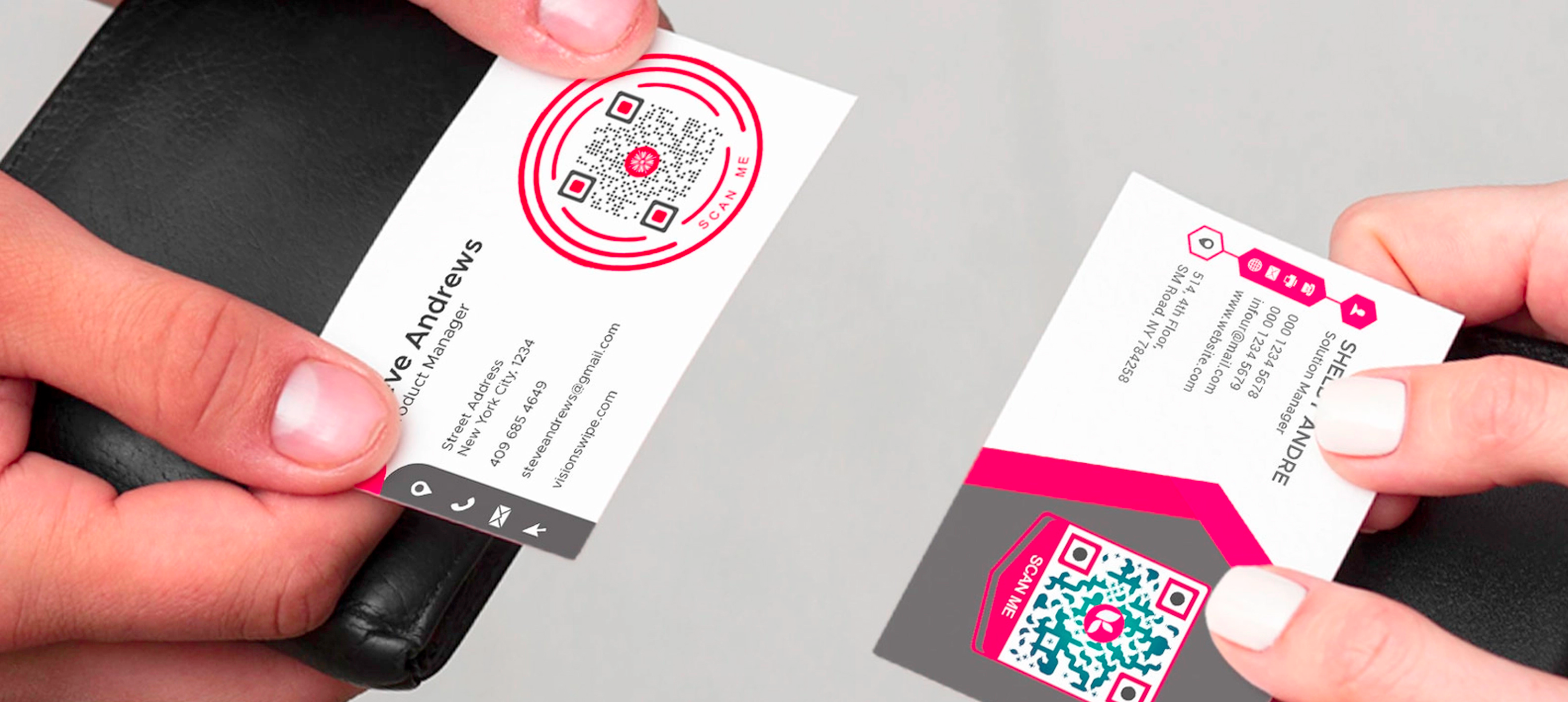
Engage your audience with interactive business cards that go beyond paper. Consider incorporating QR codes linking to your website or social media profiles, or experiment with unconventional shapes and textures that invite touch and exploration.
Incorporate interactive elements like scratch-off sections or fold-out panels to engage recipients and leave a lasting impression.
Testimonials or Awards:
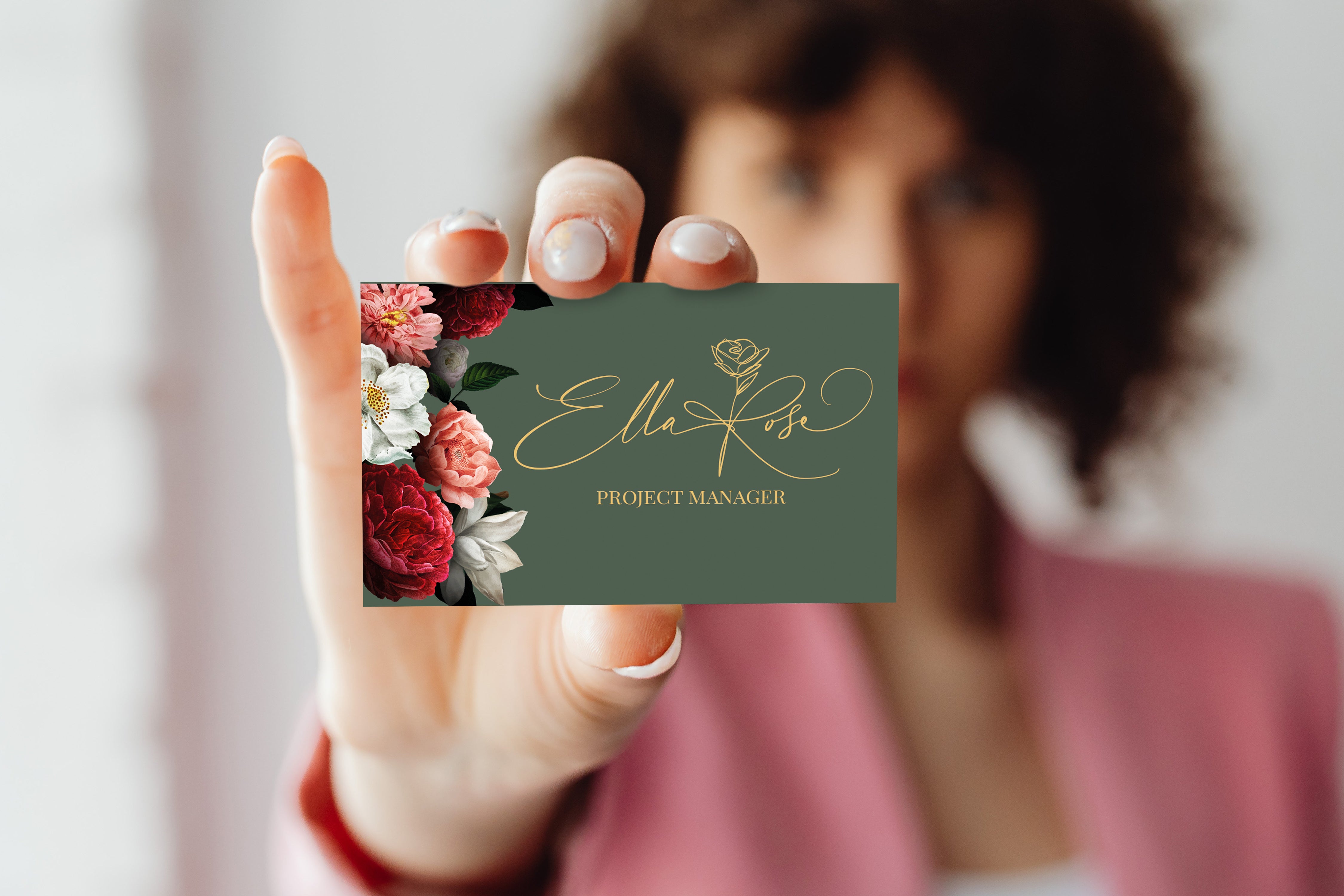
If applicable, include brief testimonials or mention any awards or recognitions your business has received. This helps establish credibility and trust.
Localized Design:

Customize your card design to resonate with your target audience or specific geographic location. This personalization can foster a stronger connection with recipients.
Sustainability:

Consider using eco-friendly materials or printing processes to align with environmentally conscious values. This can also be a unique selling point for your business.
Double-Sided Design:
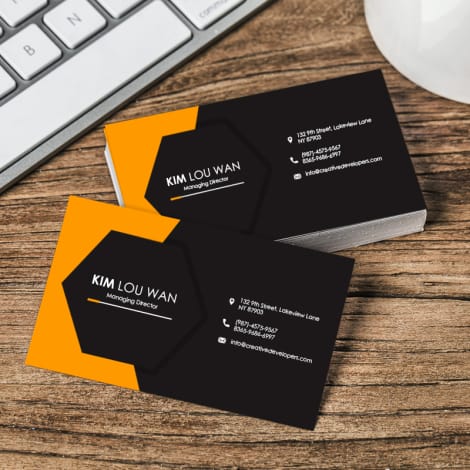
Utilize both sides of the card effectively. For example, one side can feature essential contact information, while the other side showcases your logo and a visually appealing design element.
Order here: https://24hourwristbands.com/shop/products/3-5-x-2-standard-business-cards
End Note
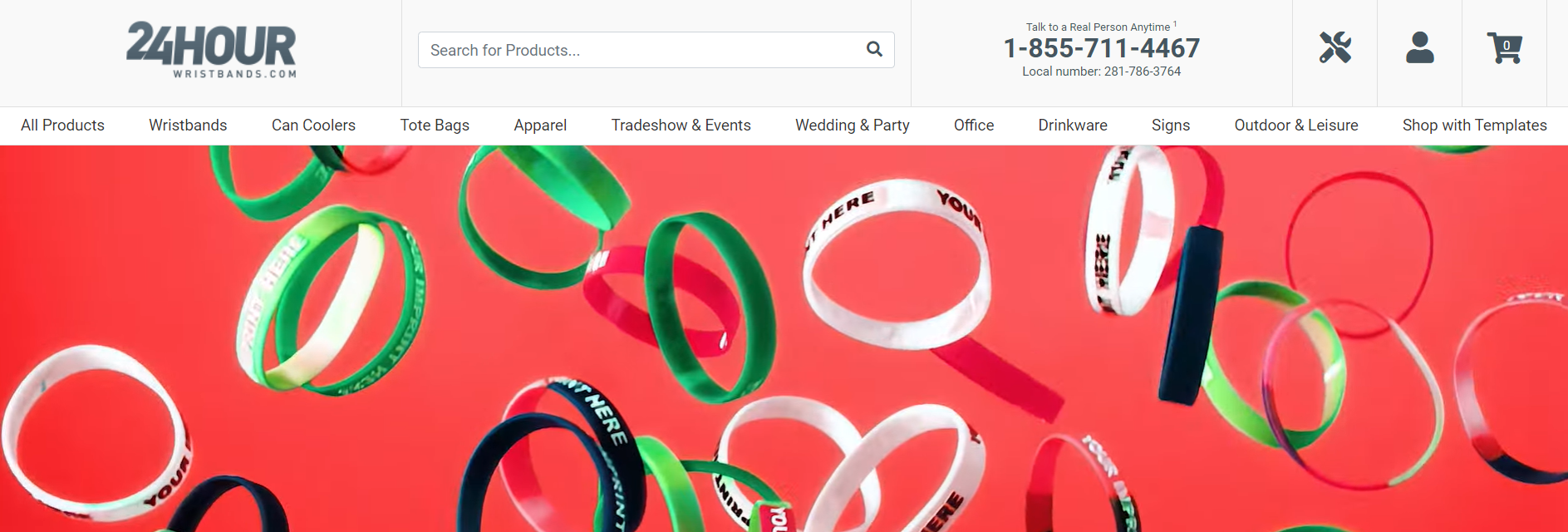
Business card marketing remains a timeless and effective strategy for expanding your network and promoting your brand. By implementing the tips mentioned above, you can maximize the impact of your business cards and unlock new opportunities for growth and success.
Elevate your marketing, networking, and promotional efforts with creative business card design ideas. By embracing innovation, visual storytelling, and functionality, your business cards can become powerful assets in leaving a lasting impression and expanding your professional network. Explore the possibilities, unleash your creativity, and watch as your business cards become valuable tools in your brand’s arsenal.



